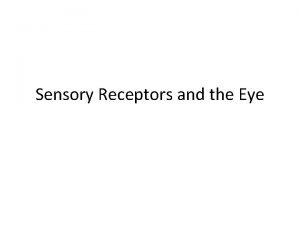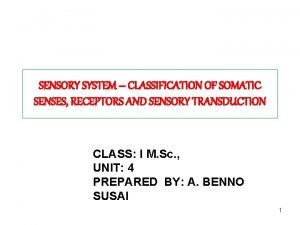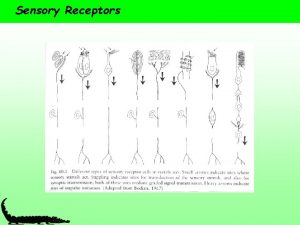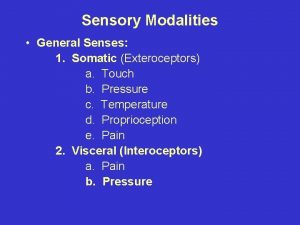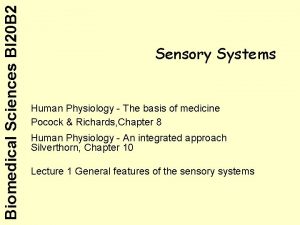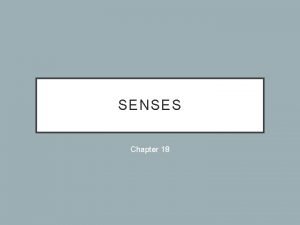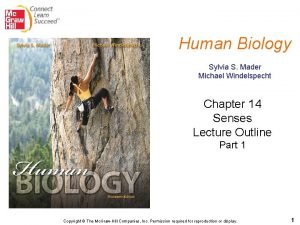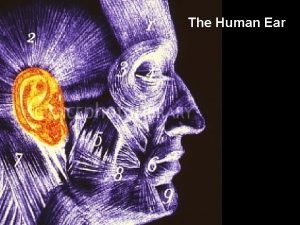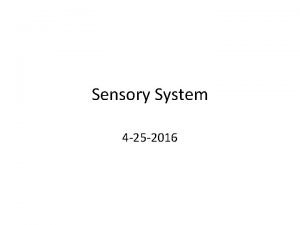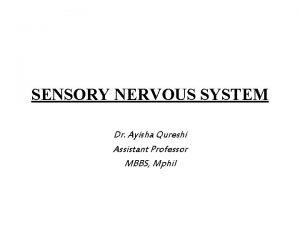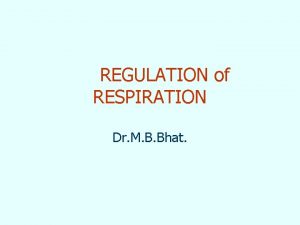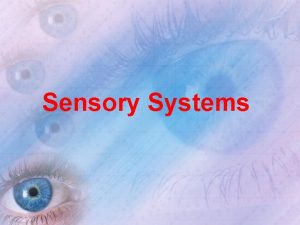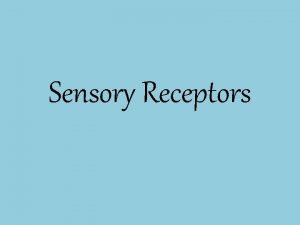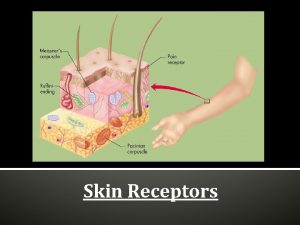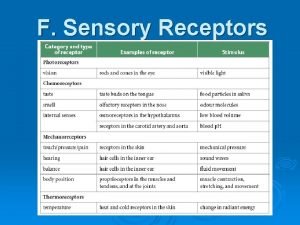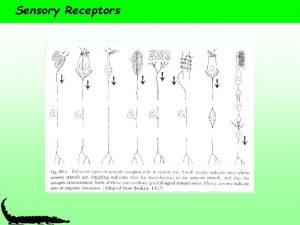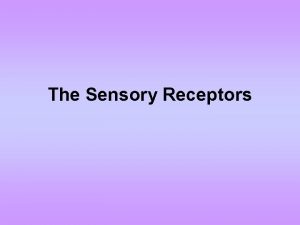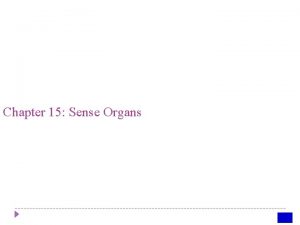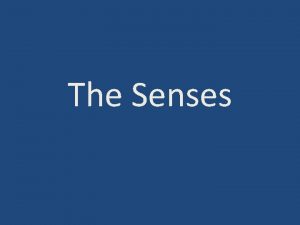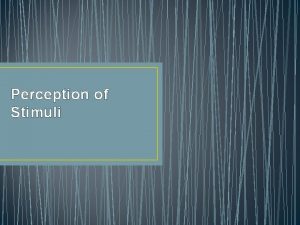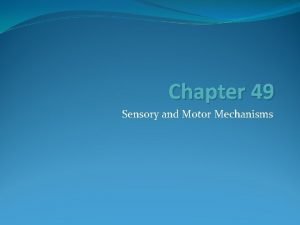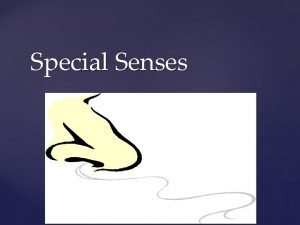The Eye The sensory receptors in your eye

















- Slides: 17

The Eye The sensory receptors in your eye detect light energy. The receptors are stimulated by light rays, which enter your eyes after bouncing off objects in the surroundings. Rods and Cones process the light to give us the total picture.

Sensory receptors for the eye are located in the retina. The retina contains 2 types of receptors 1. Rods a) Sensory receptors that are rod shaped b) sensitive to dim light c) allow us to see at night d) tell us the form and shape of objects e) need Vitamin A to work properly or night blindness will result

2. Cones a) work best in bright light b) allow us to see in colour c) 3 types each stimulated by a different colour d) some are stimulated by red light, some by green light and some by blue light Example: blue and green cones when stimulated at the same time allow you to see turquoise.

Eye Protection 1. Bones - form the eye socket to protect your eye. 2. Eyelids – thin layers of skin shield eyes from light and dust. 3. Eyebrows – prevent dust and small particles from entering the eye. 4. Eyelashes – trap particles 5. Tear glands – wash away particles, keep eye moist. Also contain chemicals that kill bacteria.

Eye Disorders and Corrections A. Normal vision 1. Cornea and Aqueous humour – focus incoming light 2. Iris adjusts the size of the pupil 3. Lens focuses the light on the Retina. Lens is held in place by ciliary muscles. a) When the muscles relax, they pull on and flatten the lens, to see objects that are far away. b) muscle must contract in order to thicken the lens to see closer objects clearly.

B. Myopia - Nearsightedness - the image of an object far away forms in front of the retina, objects appear blurry Corrected by a concave or diverging lens C. Hyperopia - Farsightedness – the image of a near object is formed behind the retina. Corrected by a convex or converging lens These lenses helps the image form properly on the retina

Light – an electromagnetic wave that is visible to the human eye. Light rays travel in straight lines. Light can either be: a) Reflected b) Refracted c) Absorbed depending on the object's capacity to let light travel through it.

Reflection happens when light hits a different medium that causes it to bounce back into the medium that it came from. Laws of reflection 1. The angle of incidence is always equal to the angle of reflection. 2. The incident ray and the reflected ray are always on the same plane.


Types of Reflection Diffuse reflection – when parallel rays strike an uneven surface and reflect back in all directions – no image is made. Specular reflection - when parallel rays strike a even surface and the rays follow the laws of reflection.

Characteristics of a reflected image 1. The image appears behind the mirror at the same distance as between the mirror and the object. 2. The image is Virtual ( made by prolonging the light rays) whereas a Real image is produced whe light rays cross. 3. The image is the same size as the object. 4. The image is horizontally inverted – the left side of the object corresponds to the right side of the image.

Refraction – the deviation of a light ray as it passes from one transparent medium into another. The most common application of the principle of refraction is lenses.

Refraction – Going from Air to Water If a light ray goes from air (FAST MEDIUM) to water (SLOW MEDIUM), it’s speed DECREASES and the angle BENDS TOWARDS the normal

Lenses – An application of refraction There are 2 basic types of lenses A converging lens (Convex) takes light rays and bring them to a point. A diverging lens (concave) takes light rays and spreads them outward.

Focal Length The greater the curvature of a lens, the more it bends light and hence the shorter the focal length.

Concave Lens In a concave lens, an incoming ray parallel to the principal axis is refracted so that it appears to come from the principal focus (F).

Movement of Light through Lenses CONVEX LENS In a convex lens, an incoming ray parallel to the principal axis is refracted through the principal focus (F).
 Exteroceptors
Exteroceptors Types of sensory receptors
Types of sensory receptors Tonic receptors
Tonic receptors Classification of sensory receptors
Classification of sensory receptors Classification of sensory receptors
Classification of sensory receptors Classification of sensory receptors
Classification of sensory receptors Referred pain chart female
Referred pain chart female Sensory receptors
Sensory receptors Proprioceptors
Proprioceptors U
U Give us your hungry your tired your poor
Give us your hungry your tired your poor Tuberous receptors
Tuberous receptors Olfactory
Olfactory Adrenergic vs cholinergic
Adrenergic vs cholinergic Umami taste receptors on tongue
Umami taste receptors on tongue Sensory neuron
Sensory neuron 3 types of lung receptors
3 types of lung receptors Hering breuer reflex
Hering breuer reflex
